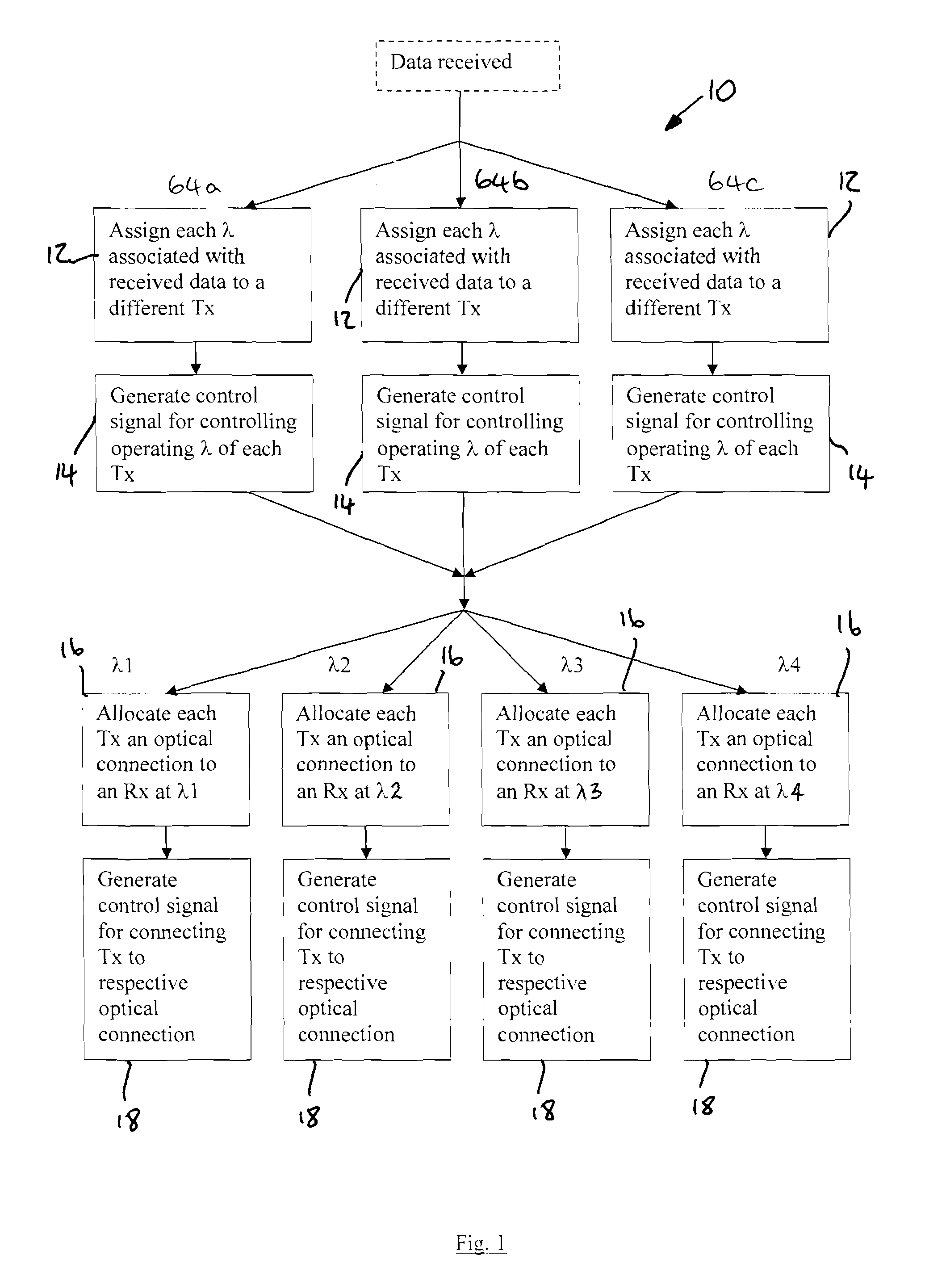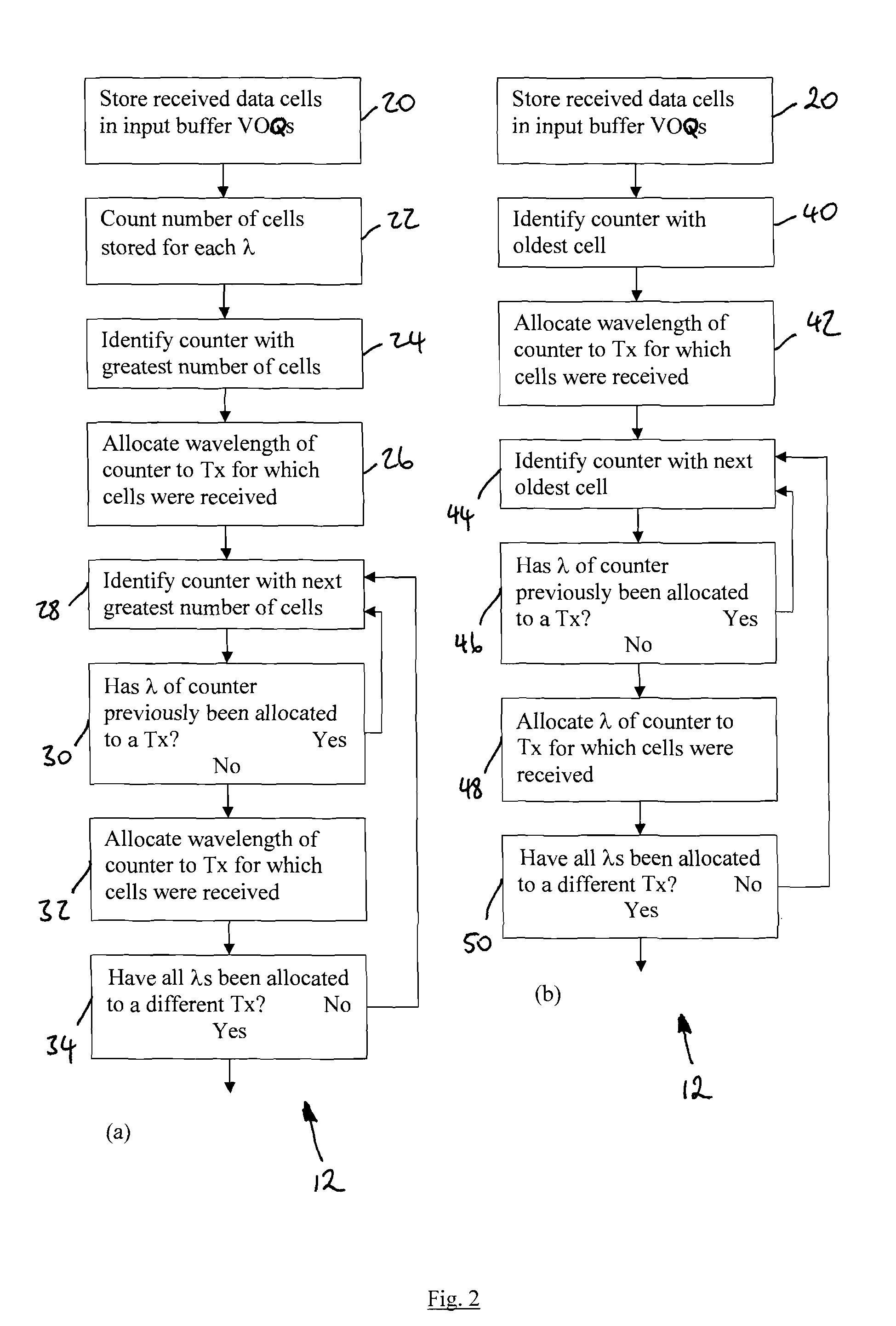Configuring synchronous optical switches
a technology of optical switches and synchronous switches, applied in data switching networks, multiplex communication, wavelength-division multiplex systems, etc., can solve the problem that high-performance scheduling algorithms cannot be used, and achieve the effect of improving the router
- Summary
- Abstract
- Description
- Claims
- Application Information
AI Technical Summary
Benefits of technology
Problems solved by technology
Method used
Image
Examples
first embodiment
[0046]Referring to FIGS. 1 to 7, the invention provides a method 10 of configuring a synchronous optical switch 60.
[0047]A synchronous optical switch 60 suitable for being configured according to the method 10 is shown in part in FIGS. 3 and 7 and comprises a first plurality (three in this example) of optical switch transmitter modules 64a, 64b, 64c and a corresponding plurality (three) of optical switch receiver modules 70. Each transmitter module 64a, 64b, 64c comprises a second plurality (four in this example) of tunable optical transmitters 66. Each receiver module 70 comprises a corresponding plurality (four) of fixed optical receivers 72. The tunable optical transmitters 66 and optical receivers 72 are connected via an optical backplane 76 comprising a third plurality of optical connections 74. The number of optical connections 74 is equal to the number of transmitter modules 64a, 64b, 64c (C) multiplied by the number of tunable optical transmitters 66 (L), and in this example...
second embodiment
[0067]Referring to FIG. 8, the invention provides a router 80 comprising a synchronous optical switch 60. The synchronous optical switch 60 is of the same type as shown in FIGS. 3 and 7, but is here shown in more detail.
[0068]The synchronous optical switch 60 comprises a switch control unit 82, three optical switch transmitter modules 64a, 64b, 64c, three optical switch receiver modules 70, and an optical backplane 76 providing twelve optical connections (not shown in FIG. 8).
[0069]Each transmitter module 64a, 64b, 64c comprises four tunable optical transmitters 66 and a transmitter module control unit 68. Each optical switch receiver module 70 comprises four optical receivers.
[0070]Each transmitter module control unit 68 is arranged to assign wavelengths associated with received data cells to the tunable optical transmitters within its respective transmitter module 64a, 64b, 64c, according to the method 10 as described above. Each transmitter module control unit 68 is further opera...
PUM
 Login to View More
Login to View More Abstract
Description
Claims
Application Information
 Login to View More
Login to View More - R&D
- Intellectual Property
- Life Sciences
- Materials
- Tech Scout
- Unparalleled Data Quality
- Higher Quality Content
- 60% Fewer Hallucinations
Browse by: Latest US Patents, China's latest patents, Technical Efficacy Thesaurus, Application Domain, Technology Topic, Popular Technical Reports.
© 2025 PatSnap. All rights reserved.Legal|Privacy policy|Modern Slavery Act Transparency Statement|Sitemap|About US| Contact US: help@patsnap.com



